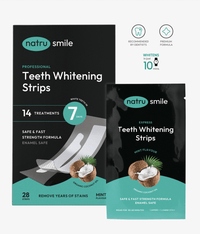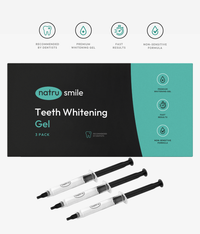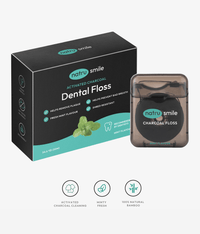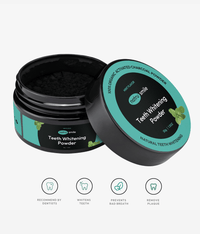
All products are certified by dental expert Dr. Greg Grillo
Tooth extraction is a significant investment. And in some cases, it can take as long as a year for you to completely finish the procedure.
If you want to make sure you get the most out of the tooth extraction cost, then taking steps to heal as quickly as possible is critical.
This means you'll have to take extra care around your mouth, including being mindful of the foods you eat.
In general, it is important to eat soft and nutritious foods that won't irritate your extraction site or cause further damage to your teeth or gums.
But how long after tooth extraction should you wait before eating?
And what foods should you specifically avoid?
In this article, we'll answer these questions and provide a comprehensive guide on the best foods to eat after tooth extraction.
Can I Eat After Tooth Extraction?
There are only a few reasons why you would have your teeth extracted. Besides broken teeth and wisdom teeth removal, this procedure is usually only required for those with severe tooth decay or periodontal disease.
But tooth extraction is highly invasive—it requires numbing the area and cutting open your gum tissue in order to pull out the tooth.
After your dentist puts a titanium screw into your would-be tooth's space (to anchor a dental implant), they'll stitch up the affected area and send you home with a set of instructions on what to do afterward.
Among these post-surgery tips—which include vaping after tooth extraction, aftercare instructions, and prescriptions—dentists typically advise patients not to eat anything right away.
There are a few reasons for this:
- Your gums need time to heal and re-seal the cut made by the dentist.
- If food becomes lodged underneath the stitches, it can cause infection.
- If you eat too soon, your mouth will not be ready to manage the impacts of chewing and digestion.
- Sensitivity is a common side effect following tooth extraction procedures, and hard or crunchy foods may only further irritate the affected area.
- Hot and cold foods might cause significant pain and swelling.
Of course, it's unrealistic to suggest that you should go even 24 hours without eating. If that were the case, the hunger would be greater than the pain of the actual extraction.
But it's important to be careful what you eat. If you want to ensure a proper recovery and minimize pain, there are certain foods you should focus on and certain foods to avoid in the days following a tooth extraction.
Diet After Dental Extraction: Best Food List
After a dental extraction, it's important to focus on foods that are soft, low in fiber, and nutrient-dense. These foods will help to nourish your body while allowing time for the extraction site to heal.
Here's a list of some of the best foods to eat after tooth extraction:
- Soups and broths
- Soft-cooked vegetables
- Soft fruits (e.g., bananas, avocados, and berries)
- Scrambled eggs
- Tofu
- Fish and seafood
- Mashed potatoes
- Applesauce
- Yogurt
- Ice cream
- Smoothies
- Pudding
- Soft-cooked grains like oatmeal and quinoa.
When eating these foods, it's still important to remember to chew away from the extraction site.
If you experience sensitivity to hot and cold post-extraction take extra precautions with certain foods, such as letting your soup cool before eating it or making smoothies with room-temperature ingredients.
What Not To Eat After Tooth Extraction
We know that after a dental extraction, you should focus on nutrient-dense and soft foods like soups, eggs, fish, and cooked vegetables.
But there are also certain foods to avoid post-tooth extraction that could delay the healing process or cause further damage.
Avoid eating the following foods for a quicker and easier healing process:
- Hard or crunchy foods (such as chips, nuts, popcorn, and crackers)
- Sticky foods (such as taffy, caramels, and gum)
- Tough or chewy meats or vegetables
- Very hot and cold beverages or food (e.g., drinking coffee after tooth extraction)
- Acidic foods or drinks (such as citrus fruits, vinegar, and tomato sauce).
- Foods with bread (such as sandwiches, toast, tacos, and pizza)
- Starchy snacks (e.g., french fries, potato chips, tortilla chips, and pretzels)
If you eat starchy, bread-based foods, particles can become lodged underneath the stitches, which could lead to infection.
It's also important to avoid acidic foods and drinks as they can aggravate the extraction site and cause a burning sensation in your mouth.
Want to learn more? Here are the questions our customers ask us the most.
What Can I Eat 24 Hours After Tooth Extraction?
In the first 24 hours after your tooth extraction, you should only consume soft foods and liquids. These include smoothies, soups, mashed potatoes, yogurt, applesauce, smooth nut butters (such as peanut butter), fish and seafood, oatmeal or quinoa porridge, and soft-cooked vegetables.
When you feel more comfortable doing so, you can ease into a more regular diet. But it's best to avoid hard, crunchy, or chewy foods as they may irritate the extraction site and lead to infection, especially for the first few days.
How Soon Can I Eat Ice Cream After Tooth Extraction?
Ice cream is a popular treat to enjoy after a tooth extraction. Not only is it a solid food, but it is also cold which can help reduce swelling and soothe the pain of your recent extraction. Especially in the first 24 hours, ice cream is one of the best things you can eat.
That said, you should still avoid chunky ice cream (i.e., ice cream containing chocolate chips, nuts, or other hard particles). This can irritate the extraction site, which can lead to pain and infection.
Since ice cream is perfectly safe (and arguably beneficial) to eat after tooth extraction, whether or not you choose to eat it will be based on your personal feelings about its nutritional value and ability to digest lactose. Since it is calorically dense, filled with sugar, and may lead to some digestive upset, you may want to limit ice cream intake.
When Can I Eat Crunchy Food After Tooth Extraction?
To minimize the risk of dry sockets (which occur in one to four percent of patients), it's best to avoid crunchy foods for about one week after a tooth extraction. Foods like potato chips, nuts, popcorn, and crackers can easily get stuck in the extraction site or cause irritation.
When small food particles from these types of foods get underneath your gums, the bacteria that live in your mouth begin to feed off of them and can cause infection. So, if possible, avoiding crunchy foods for at least one week after tooth extraction is best.
If you do decide to eat crunchy food, make sure that it is thoroughly chewed before swallowing to prevent any particles from getting lodged in the socket. Also be sure to rinse your mouth with lukewarm water afterward to reduce the risk of infection as much as possible.
When Can I Eat Regular Food After Tooth Extraction?
There are many elements of a regular diet you can eat after tooth extraction. For example, you can eat soft-cooked vegetables, smooth nut butters (e.g., peanut butter), oatmeal, and other soft foods in the hours and days following your procedure.
To completely go back to a "regular" eating routine (i.e., a routine you don't need to pay special attention to), it's generally best to wait at least one week after the extraction. During this time, avoid hard or crunchy foods and stick with soft, easily digestible items that won't irritate your extraction site.
By avoiding certain foods (such as acidic fruits, carbonated drinks, and crunchy snacks) for at least a week after tooth extraction, you can greatly reduce the risk of infection and ensure that your recovery goes as smoothly as possible.
It's also important to make sure that you're drinking plenty of water throughout the day to keep your mouth clean and hydrated. This can help to speed up the healing process and ensure fewer particles are stuck in hard-to-reach places.
What Can I Eat 5 Days After Tooth Extraction?
After five days, the socket where your tooth (or teeth) were extracted should have healed for the most part. At this point, you can start to ease back into a regular diet. Still, you should pay attention to the foods you're eating and avoid anything too hard or crunchy that could get stuck in the extraction site.
If your teeth are still sensitive, the cuts in your mouth haven't completely closed up, or you're still experiencing pain and swelling, it's best to stick with soft foods until the site has healed completely, even if you are past this five-day mark. The amount of time you should wait after a tooth extraction also depends on the complexity of the procedure and any other conditions that may affect your healing process.
When Can You Eat Solid Food After Tooth Extraction?
In general, you only need to avoid solid food completely for the first 24 hours. If your mouth requires significant healing, you might want to wait until the first 48 hours pass.
By the third day, most dentists agree that it is safe to eat solid food again, as long as you choose items that don't require significant chewing. For instance, mashed potatoes, cooked eggs, and soft-cooked vegetables are all good choices. As your mouth continues to heal in the days following your extraction, you can slowly reintroduce harder or crunchier foods into your diet.
Can I Eat Pancakes After Tooth Extraction?
Pancakes are a starchy food, meaning that there is a chance for them to get stuck in the extraction site. But they are a soft food, so they are safe to eat with proper care.
To ensure that a pancake doesn't cause any trouble, make sure it is cut into small pieces and thoroughly chewed before swallowing. Additionally, you should avoid consuming syrup or other sugary toppings with the pancakes since sugar can encourage bacterial growth. You should also avoid nuts, which are a common topping for pancakes, as they can be too hard and potentially cause irritation.
When Can I Eat Rice After Tooth Extraction?
Rice is a soft food that is safe to eat after the first 24-48 hours, depending on how your mouth is healing. To reduce the risk of irritation, soak dry white rice in water for a few minutes and then cook it until it is soft and easy to chew. Avoid fried or crunchy rice, as these can be too hard and get stuck in the extraction site.
What Can You Eat After Wisdom Tooth Extraction?
When it comes to aftercare following the extraction of wisdom teeth, the same rules apply as for a regular tooth extraction. Avoid hard or crunchy foods for at least one week and opt for soft items that won't irritate your gums.
Soft cooked vegetables, creamy soups, and yogurt are all excellent options that can help you stay nourished while your mouth heals. Additionally, make sure you drink plenty of water to keep the extraction site clean and hydrated.
Can I Eat Bread After Tooth Extraction?
It's best to avoid bread for the first 24-48 hours after tooth extraction, as the crust can cause irritation or get stuck in the area. After that, you can enjoy soft breads like banana bread, muffins, and pancakes.
Even after this initial healing period, it is still best to avoid hard breads like baguettes and crusty rolls until the extraction site has completely healed. These types of bread can cause the cuts in your mouth to reopen, delaying the healing process.
Can You Eat Rice After Tooth Extraction?
Yes, you can eat rice after tooth extraction as long as it is cooked until soft and easy to chew. Dry white rice should be soaked in water for a few minutes before cooking, while brown or wild rice takes longer to cook to a softer consistency.
Can I Eat Pasta After Tooth Extraction?
Pasta is safe to eat after the initial 24-to-48-hour period following a tooth extraction, as long as it is cooked until soft and easy to chew. After that, it's still a good idea to watch the ingredients you put into your pasta. Anything too crunchy or hard could irritate the extraction site and delay healing.
Why Can't I Eat Dairy After Tooth Extraction?
If you were sedated with an anesthetic, it is important to avoid dairy for the first 24 hours after your procedure. This is because some anesthetics can interact poorly with diary, causing nausea, vomiting, and other digestive issues.
After the initial period has passed, it's safe to enjoy soft cheeses, ice cream, and yogurts without any major issues, according to research.
Can I Drink Water After Tooth Extraction?
Drinking water after tooth extraction is not only safe, but encouraged. Staying hydrated will help keep your extraction site clean and provide necessary nutrients to promote healing. If you experience sensitivity, room-temperature water is best, as cold or hot drinks can cause pain.
Can I Eat Ramen Noodles After Tooth Extraction?
Ramen noodles are safe to eat after tooth extraction, as long as they are cooked until soft and easy to chew. Avoid adding any crunchy, chewy, or excessively spicy toppings or ingredients that could irritate the extraction site. If sensitivity is a major issue, it is best to avoid the broth that comes with instant ramen noodles, as this can be too salty and cause discomfort.
Can I Eat Soup With Noodles After Tooth Extraction?
Noodle soup is easy on your mouth and can be a good option for eating after tooth extraction, as long as the noodles are cooked until soft. Avoid overly spicy or salty ingredients which could cause irritation and delay healing. Additionally, it is best to stay away from crunchy toppings such as crispy onions, hard vegetables, and some types of meat.
Can I Eat A Banana After Tooth Extraction?
Bananas have a soft texture and are easy to chew, making them a good choice for eating after tooth extraction. Bananas are also healthy and provide key nutrients to help promote healing and reduce inflammation in the area. They also make excellent additions to any smoothie—a food item you will almost certainly eat after tooth extraction.
The Bottom Line
Figuring out what and what not to eat after teeth whitening isn't difficult. By avoiding solid food for the first day or two, and then sticking to soft, easy-to-chew foods until the extraction site is healed, you can ensure your mouth has plenty of time to heal properly.
By paying attention to the ingredients in your food and avoiding anything too hard or crunchy, you can reduce irritation and speed up healing. And, above all, remember to stay hydrated—water is essential for healthy teeth and gums.
Taking care of yourself after a tooth extraction will help make the healing process fast and easy. With the right dietary choices and some patience, you can get back on track in no time.










